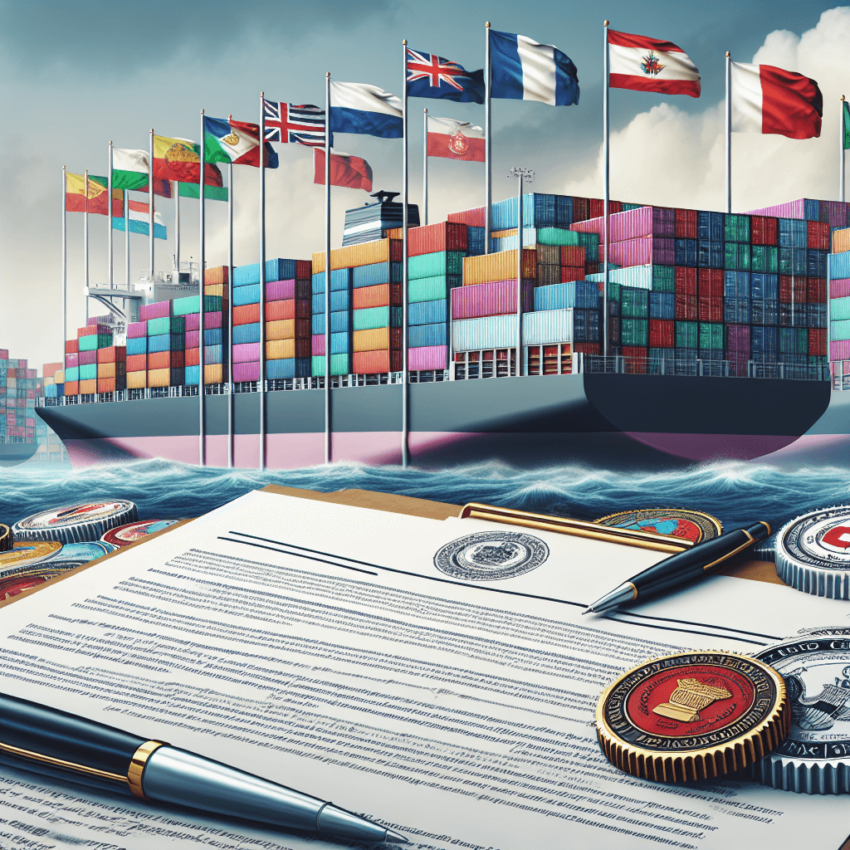
Imagine navigating the high seas, where a labyrinth of laws and conventions steer your every move. This is the reality for the container shipping industry, a sector that lies at the heart of global trade. Each year, millions of containers crisscross the oceans, transporting goods from every corner of the planet. Yet, the journey is far from straightforward due to the complex web of international regulations governing shipping practices, environmental protections, and labor standards. These regulations are pivotal in maintaining order and safety on international waters and ensuring fair trade practices, but they also pose significant challenges to the industry.
Container shipping represents the lifeblood of global trade, with thousands of vessels traversing the oceans to deliver goods to various corners of the world. However, the operation of such a vast and intricate system does not occur without constraints. Container shipping companies must constantly adapt to a labyrinth of international regulations that govern everything from safety norms to environmental considerations. Such compliance is not just a matter of legal necessity; it constitutes the very framework through which the industry fosters sustainability, competitiveness, and reliability.
The Intricacies of Maritime Regulatory Compliance
At the heart of maritime regulation lies a diverse array of organizations and frameworks that create the global rules of engagement for shipping companies. The International Maritime Organization (IMO), a United Nations agency, spearheads the development and propagation of international regulations designed to ensure safe, secure, environmentally sound, efficient, and sustainable shipping. Regulations such as the International Convention for the Safety of Life at Sea (SOLAS) and the Maritime Labour Convention (MLC) are among many that set comprehensive norms for vessel safety, construction, and crew conditions.
Shipping companies are required to keep abreast of and adhere to these regulations, which are enforced through inspections and certificates. Yet, international regulations are only one facet of the compliance coin; national and local laws also play a significant role. Each country that a shipping company navigates may enforce its own set of maritime laws, often adding extra layers of complexity to compliance.
Environmental Stewardship through Regulation
The environmental impact of shipping is another critical area of international regulatory focus. The IMO, for example, has set progressive targets for reducing greenhouse gas emissions from ships. Its initial strategy envisions, among other objectives, a decrease in total annual greenhouse gas emissions from international shipping by at least 50% by 2050 compared to 2008. The industry is also contending with regulations like those concerning ballast water management, which aim to prevent the spread of invasive aquatic species across marine ecosystems.
To stay compliant and environmentally responsible, shipping companies invest in research and development to find greener alternatives. The adoption of liquefied natural gas (LNG) as a less polluting fuel option, the exploration of wind and solar power for auxiliary energy, and the deployment of exhaust gas cleaning systems, also known as scrubbers, exemplify initiatives undertaken by the industry to meet environmental regulations.
Adapting to Technological and Operational Shifts
Container shipping companies are increasingly harnessing technology to remain in compliance with the ever-evolving regulatory landscape. State-of-the-art software provides crews with real-time data on navigational charts, weather updates, and route optimization, all of which help ensure adherence to international maritime routes and protected areas. Digital platforms also facilitate seamless documentation and cargo tracking, simplifying the administrative compliance burden associated with international trade.
Beyond technology, operational shifts such as strategic alliances and operational efficiencies have become essential for shipping companies to stay competitive and compliant. By forming consortia, carriers can share vessels and networks, optimizing capacity, and reducing operational costs while maintaining service excellence. These alliances also allow sharing of best practices and joint efforts to meet regulatory standards, such as coordinated schedules to reduce emissions.
The Human Element and Crew Welfare
A crucial aspect often understated in discussions about compliance in container shipping is the welfare of seafarers. International regulations don’t only revolve around the vessels and their operational standards but also extend to the individuals who make the global movement of goods possible. Regulations such as the MLC ensure that the rights of seafarers are protected, specifying provisions for their work conditions, accommodations, recreational facilities, food and catering, health protection, medical care, and social security.
Shipping companies must be vigilant in complying with these regulations as they form the ethical foundation of the industry. Initiatives that promote a culture of safety, prioritize mental health, and provide continuous training are indispensable. Companies are increasingly recognizing that ensuring the well-being of their crew is inextricably linked to their overall compliance strategy and competitiveness.
The Road Ahead for Container Shipping Compliance
The task of navigating the complex web of international regulations in container shipping is monumental, requiring a high level of diligence and adaptability. Container shipping companies must stay informed of regulatory changes, adopt environmentally friendly technologies, leverage strategic operational shifts, and prioritize the welfare of their crews. The dynamic nature of international trade, coupled with societal demands for more sustainable practices, signifies that this maze of regulations will continue to grow and morph.
Acting as responsible global citizens, it falls upon the shipping industry to respond to these regulations and to often anticipate and lead change. Through innovation, collaboration, and a steadfast commitment to compliance, the shipping industry plays a pivotal role in shaping a more secure and sustainable future for international trade. Engaging with these challenges head-on, the actors within this space contribute to a greener, more ethical, and more efficient future for global commerce, charting a course through the complexities toward continued success.


